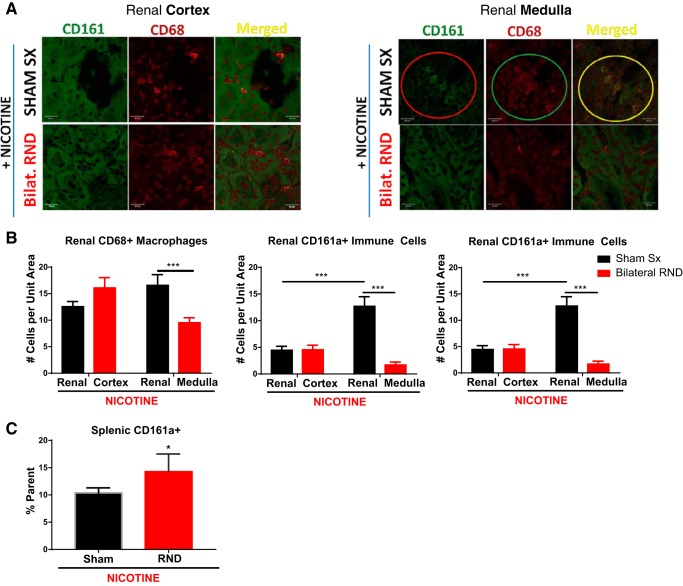Fig. 2.
Bilateral renal denervation (RND) prevents renal infiltration of inflammatory CD161a+/CD68+ M1 macrophages. Young 3- to 4-wk-old spontaneously hypertensive rats underwent either sham surgery (Sham Sx; n = 6) or bilateral RND (n = 6), followed by subcutaneous infusion of nicotine (15 mg·kg−1·day−1) for 2 wk. Renal tissues, obtained at the end of infusion, were sectioned and stained with antibodies targeting CD161a (FITC) and CD68 (PE). A: images of the renal cortex (left) and renal medulla (right) were captured using confocal microscopy for CD161a (FITC) and CD68 (Alexa fluor 555). B manual counts from 3 random fields from each animal of CD68+ macrophages (left), CD161a+ immune cells (middle), and CD161a+/CD68+ macrophages (right). C: flow cytometry for CD161a+ immune cells from the spleen, represents peripheral circulation. Two-way ANOVA with Tukey posttest was used to determine significance for renal immune cells between the renal cortex and medulla in the Sham Sx and RND groups. Student’s t-test was used to analyze splenic CD161a+ immune cells between the Sham Sx and RND groups. Error bars represent means ± SE. *P < 0.05 and ***P < 0.001.

